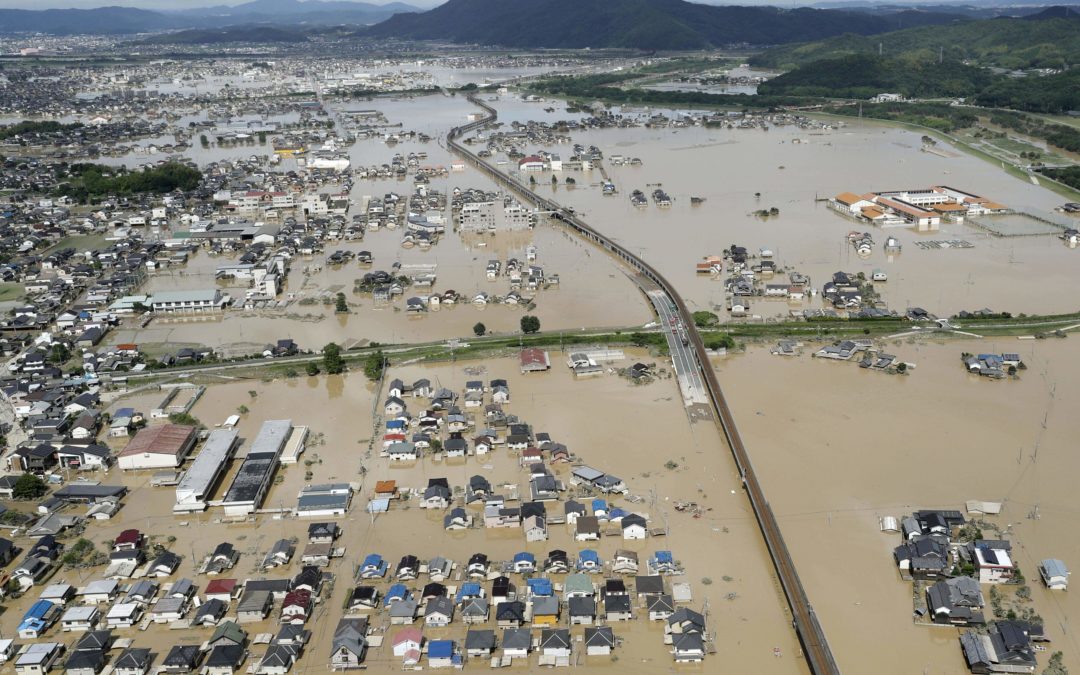SOURCE: The Outline
DATE: July 11, 2018
SNIP: In Japan, what started as a downpour on June 28 refused to relent, dug in its heels, and kept dumping rain on southern Japan for more than two weeks, and at least 176 people lost their lives [Note: this figure is expected to rise as dozens are still missing]. A blanket of water 847 million cubic feet in scale flooded the region, destroying almost 2,000 homes. The worst-hit regions were struck with about 70 inches of rain—almost six feet. Then, on July 9, just as the rain stopped, a barrage of simultaneous landslides devastated thousands of square miles in Western Japan, causing over 100 of the 176 deaths.
The flooding in Japan is a tragic example of what happens when climate change raises the threat of dangerous but (at least at the time of onset) sub-emergency weather, like torrential rain, in regions that aren’t used to experiencing comparable events like typhoons or hurricanes. The country had no reason to expect that the event would be so extreme, and as a result, it didn’t have the emergency response mechanisms in place to properly deal with the issue. As climate change makes weather more unpredictable, particularly when weather forecasting relies on relatively calm historical information, the potential for unexpected consequences is much higher.
Extreme rain events is a common phenomena in many Pacific-adjacent areas of land, but not Japan. It’s a temperate region prone to earthquakes and tsunamis, but extreme rainfall is not typically a weather threat that’s persistent enough to take seriously. An unnamed Japanese weather official told the BBC, “We’ve never experienced this kind of rain before.”
Japan’s Meteorological Agency has a budget of $57.8 billion, so it’s not that it’s underfunded and drawing up poor predictions. But meteorology works by considering weather in the past. When there’s little to no precedent for an event, there’s not as much of a reason to expect it in the present. Disaster preparedness works the same way: governments figure out how to respond to an issue based off of which responses worked and didn’t work in the past. So what do they do when they’re faced with an event of quite literally unprecedented scale?
Climate change is dangerous largely because it has the capacity to unearth the corruption, inefficiencies, and inadequacies in governments. When there’s a climate change-driven disaster, all of these vulnerabilities come to light. However, it’s just as scary to consider that high death tolls aren’t always driven by corruption. What was true in the past simply isn’t true for the present, and it won’t be true for the future. Even for competent scientists and leaders, that’s an incredibly difficult challenge to face.

